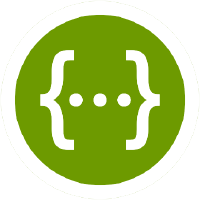
Adobe Flash is a discontinued multimedia software platform used for production of animations, rich internet applications, desktop applications, mobile apps, mobile games, and embedded web browser video players.

The Windows API, informally WinAPI, is the foundational application programming interface (API) that allows a computer program to access the features of the Microsoft Windows operating system in which the program is running.

Adobe ColdFusion is a commercial rapid web-application development computing platform created by J. J. Allaire in 1995. ColdFusion was originally designed to make it easier to connect simple HTML pages to a database. By version 2 (1996) it had become a full platform that included an IDE in addition to a full scripting language.

A web API is an application programming interface (API) for either a web server or a web browser. As a web development concept, it can be related to a web application's client side. A server-side web API consists of one or more publicly exposed endpoints to a defined request–response message system, typically expressed in JSON or XML by means of an HTTP-based web server. A server API (SAPI) is not considered a server-side web API, unless it is publicly accessible by a remote web application.
Feedburner, Inc. is a web feed management service primarily for monetizing RSS feeds, primarily by inserting targeted advertisements into them. It was founded in 2004 and acquired by Google in 2007.
Google Gadgets are dynamic web content that can be embedded on a web page. They can be added to and interact strongly with Google's iGoogle personalized home page and the Google Desktop application, as well as Google Wave and Google Sites. Webmasters can add and customize a gadget to their own business or personal web site, a process called "syndication".
This is a comparison of web frameworks for front-end web development that are heavily reliant on JavaScript code for their behavior.

Google Closure Tools is a set of tools to help developers build rich web applications with JavaScript. It was developed by Google for use in their web applications such as Gmail, Google Docs and Google Maps. As of 2023, the project had over 230K LOCs not counting the embedded Mozilla Rhino compiler.

An application programming interface (API) is a way for two or more computer programs or components to communicate with each other. It is a type of software interface, offering a service to other pieces of software. A document or standard that describes how to build or use such a connection or interface is called an API specification. A computer system that meets this standard is said to implement or expose an API. The term API may refer either to the specification or to the implementation. Whereas a system's user interface dictates how its end-users interact with the system in question, its API dictates how to write code that takes advantage of that system's capabilities.

Google Fusion Tables was a web service provided by Google for data management. Fusion tables was used for gathering, visualising and sharing data tables. Data are stored in multiple tables that Internet users can view and download.
HTML5 Audio is a subject of the HTML5 specification, incorporating audio input, playback, and synthesis, as well as in the browser.
WebAR, previously known as the Augmented Web, is a web technology that allows for augmented reality functionality within a web browser. It is a combination of HTML5, Web Audio, WebGL, and WebRTC. From 2020s more known as web-based Augmented Reality or WebAR, which is about the use of augmented reality elements in browsers.
Leaflet is a JavaScript library used to build web mapping applications. It allows developers without a GIS background to display tiled web maps hosted on a public server, with optional tiled overlays. It can load feature data from GeoJSON files, style it and create interactive layers, such as markers with popups when clicked.
Google Cloud Platform (GCP), offered by Google, is a suite of cloud computing services that provides a series of modular cloud services including computing, data storage, data analytics, and machine learning, alongside a set of management tools. It runs on the same infrastructure that Google uses internally for its end-user products, such as Google Search, Gmail, and Google Docs, according to Verma, et.al. Registration requires a credit card or bank account details.
Kubernetes is an open-source container orchestration system for automating software deployment, scaling, and management. Originally designed by Google, the project is now maintained by a worldwide community of contributors, and the trademark is held by the Cloud Native Computing Foundation.
Google PageSpeed is a family of tools by Google, Inc. designed to help optimize website performance. It was introduced at a Developer Conference in 2010. There are four main components of PageSpeed family tools: PageSpeed Module, PageSpeed Insights, PageSpeed Service, and the PageSpeed Chrome DevTools extension. These components aim to identify and automatically correct deviations from Google's Web Performance Best Practices.

AWS Lambda is an event-driven, serverless computing platform provided by Amazon as a part of Amazon Web Services. It is designed to enable developers to run code without provisioning or managing servers. It executes code in response to events and automatically manages the computing resources required by that code. It was introduced on November 13, 2014.

Swagger is a suite of tools for API developers from SmartBear Software and a former specification upon which the OpenAPI Specification is based.

A progressive web application (PWA), or progressive web app, is a type of application software delivered through the web, built using common web technologies including HTML, CSS, JavaScript, and WebAssembly. It is intended to work on any platform with a standards-compliant browser, including desktop and mobile devices.








